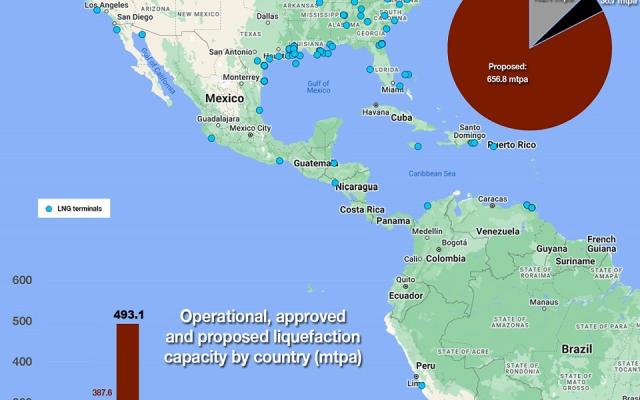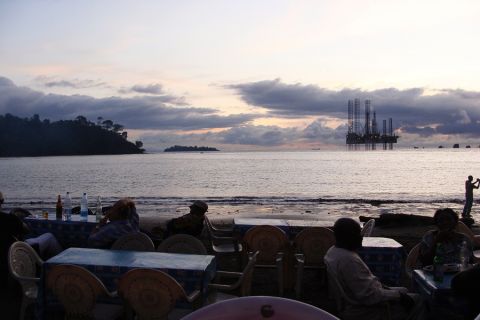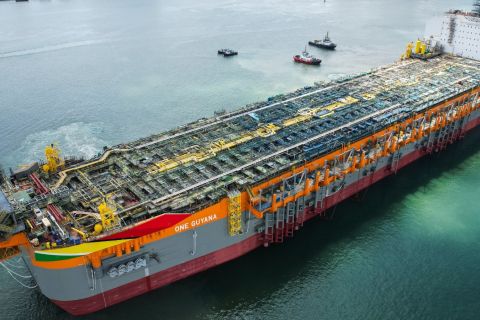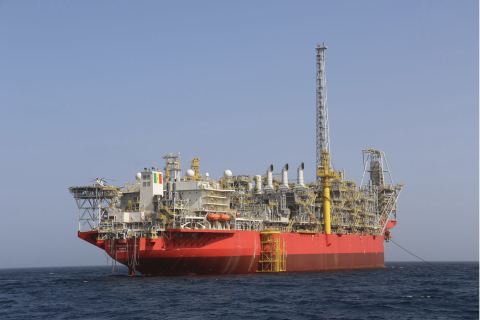
Staked by the Permian and the Vaca Muerta, Mexico and Argentina have the potential to bring to market 32.6 mtpa and 25 mtpa respectively over the near-to-mid-term, according to data from Rystad Energy and Argentina’s YPF SA. (Source: Hart Energy)
Mexico and Argentina are placing their bets on LNG exports. Mexico has access to the Permian Basin while Argentina boasts its own massive Vaca Muerta shale formation.
The stakes: the countries could swiftly rise to hold the third and fourth largest liquefaction capacity in the Americas.
For Mexico and Argentina, much of the success will rely on attracting the necessary capital, despite the political and economic headwinds specific to each country.

If actual, approved and planned liquefaction plants are fully executed, Mexico could bring to market around 32 million tonnes per annum (mtpa) over the near-to-medium term, according to Rystad Energy data compiled by Hart Energy. Other estimates put Mexico’s ultimate liquefaction capacity at around 45 mtpa.
For Mexico, its LNG success is mainly related to tapping shale gas from the Permian, which will require infrastructure to transport the U.S. gas to liquefaction plants in Mexico. While the political environment is challenging, private investors such as Sempra continue to move related projects forward.
RELATED: Permian Producers Fancy Larger Piped-gas Exports to Mexico
In Argentina’s case, that figure could reach 25 mtpa, based on details revealed by state-owned YPF SA.
For Argentina, the continued development of the Vaca Muerta, which is arguably on par with the Permian in many aspects, could anchor a massive buildup of liquefaction capacity.
Unlike Mexico, private investors in Argentina confront stronger headwinds politically, economically and financially.
The first major headwind: a need for capital to expand gas pipeline infrastructure to transport Neuquén gas to the Argentine coast to export as LNG.
The second: getting the capital necessary to finance Argentina’s first liquefaction train from Malaysia’s Petronas and YPF.
Will Mexico and Argentina succeed? Only time and capital will tell.
RELATED: Argentina Goes for LNG Exporting Glory
Senior Managing Editor Joseph Markman contributed to this story.
Recommended Reading
Deepwater Roundup 2024: Offshore Africa
2024-04-02 - Offshore Africa, new projects are progressing, with a number of high-reserve offshore developments being planned in countries not typically known for deepwater activity, such as Phase 2 of the Baleine project on the Ivory Coast.
E&P Highlights: March 25, 2024
2024-03-25 - Here’s a roundup of the latest E&P headlines, including a FEED planned for Venus and new contract awards.
E&P Highlights: April 1, 2024
2024-04-01 - Here’s a roundup of the latest E&P headlines, including new contract awards.
Deepwater Roundup 2024: Americas
2024-04-23 - The final part of Hart Energy E&P’s Deepwater Roundup focuses on projects coming online in the Americas from 2023 until the end of the decade.
Sangomar FPSO Arrives Offshore Senegal
2024-02-13 - Woodside’s Sangomar Field on track to start production in mid-2024.





